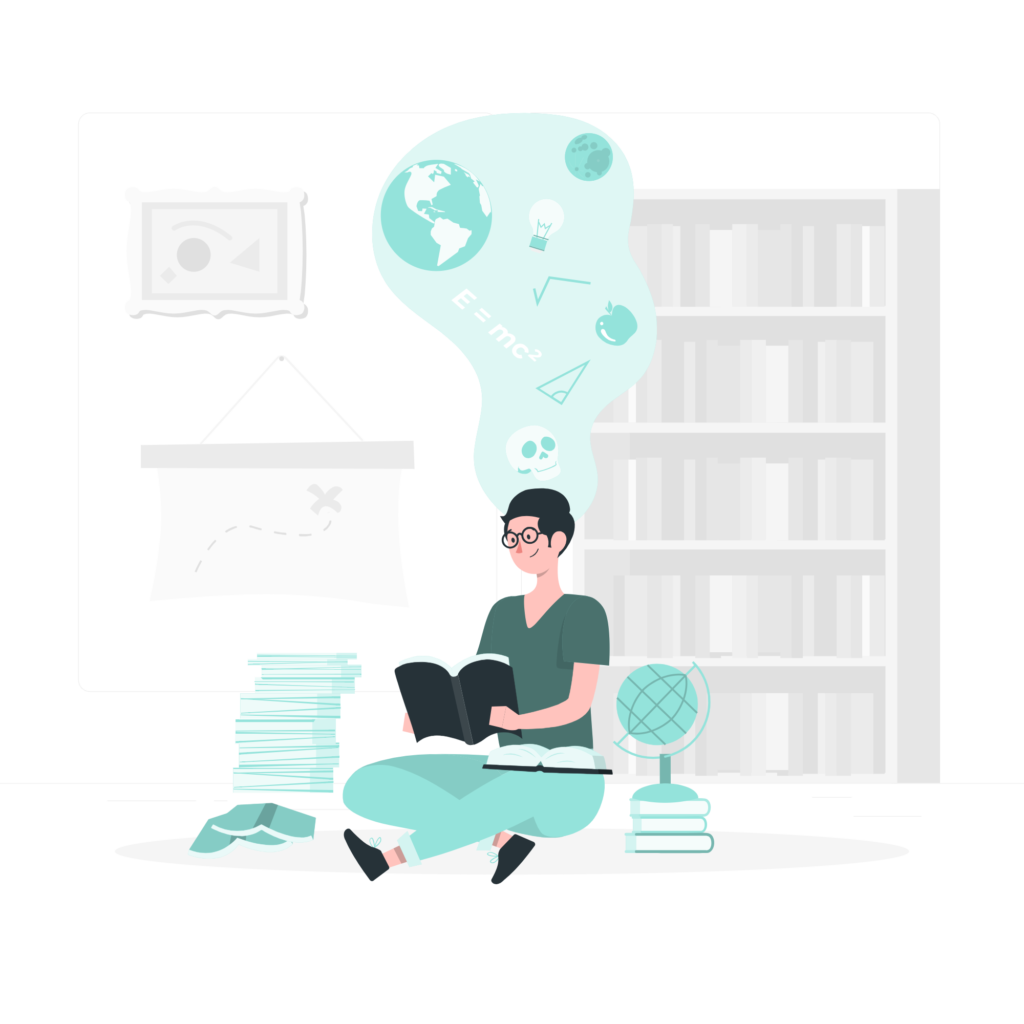
Modül 3: Tüketim toplumu ve sosyo-teknik bağlamımızı analiz etmek
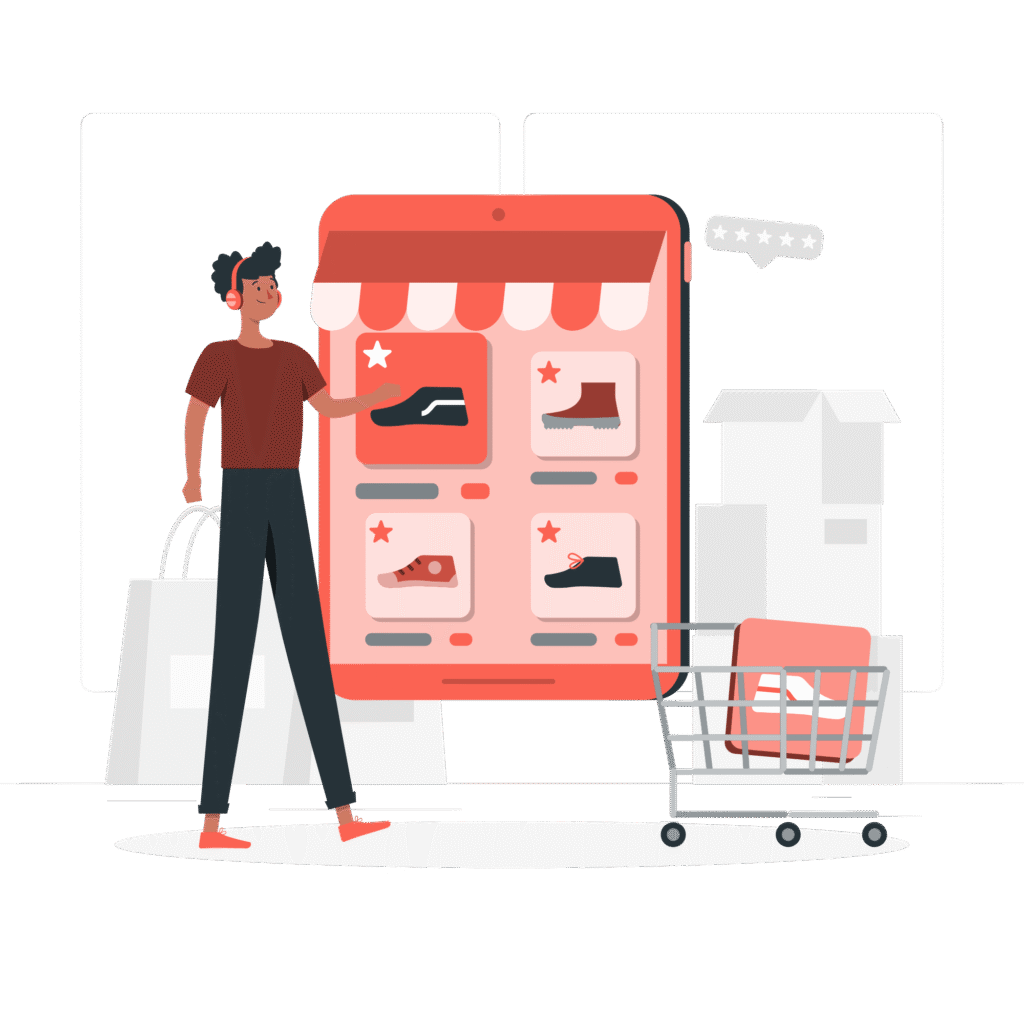
Modülün amacı
Bu öğrenme modülünün amacı, öğretmenlerin ve eğitmenlerin gençleri tüketim toplumunun etik boyutlarını eleştirel bir şekilde incelemeleri için teşvik etmek için gerekli olan geniş bir beceri ve bilgi yelpazesini kapsamaktır. Modül, tüketim toplumunun tarihsel gelişimini, sosyal değerler üzerindeki etkisini ve satın alma alışkanlıklarını ve yaşam tarzlarını şekillendirmede teknolojinin rolünü özetleyecektir.
Öğrenme çıktıları
Bu modülü tamamladıktan sonra, öğrenenler aşağıda listelenen bilgi ve becerileri kazanacaklardır:
Bilgi
- Tüketim toplumlarının tarihini anlamak
- Tüketim toplumları kavramı hakkında bilgi
- Hayatta kalmak için tüketimden imaj için tüketime doğru gelişimi anlamak
- Tüketimlerin ardındaki psikoloji
- Beynin bizi nasıl tüketime yönlendirdiğine dair bilgi
- Dopaminin ne olduğunu ve kararlarınızı nasıl etkilediğini anlamak
- Alışveriş davranışlarını yönlendiren web siteleri ve algoritmalar
- Algoritma kavramı hakkında bilgi sahibi olmak
- Algoritmaların daha fazla satın almanızı sağlamak için nasıl çalıştığını anlamak
- Tüketim ve etik
Tüketim konusunda neden daha kısıtlayıcı olmanız gerektiği hakkında bilgi sahibi olmak
Tüketimle bağlantılı israf ve bunun çevreye etkisi hakkında bilgi sahibi olmak
Ürünlerin eskimesi için üretildiğini, böylece tüketici olarak onarmak yerine yenisini almak (daha fazla satın almak) zorunda kaldığınızı anlamak.
Beceri
- Tüketim toplumunun etik boyutlarının incelenmesi
Öğrencilere reklamların ve algoritmaların nasıl çalıştığını anlayacakları şekilde açıklama becerisi
Öğrencilerin çevreyi korumak için kendi tüketimlerini kısıtlamalarına yardımcı olacak beceriler
- Etkileyicilerin sizi nasıl cezbetmeye çalıştığını eleştirel bir şekilde düşünme ve fark etme
Öğrencilerin etkileyicilerin sizi etkilemeye çalıştığına karşı eleştirel olmalarını sağlama becerisi
Öğrencilerin kendi görüşlerini başkalarının görüşlerinden ayırmalarına yardımcı olacak beceriler
Öğrencilerin kitle iletişim araçlarının etkisine karşı kendi görüşlerini savunmalarını destekleme becerisi
Konu listesi
Konu 1, tüketim toplumunun tarihsel gelişimini ele alır ve avcı-toplayıcı topluluklardan modern zamanlara kadar olan evrimini izler. Pazarlama ve sanayileşmenin tüketimi nasıl teşvik ettiğini ve mal edinmeye odaklanan bir toplum yaratmasını inceler. Konu ayrıca tüketiciliğin çevresel etkisini inceler ve etik tüketicilik kavramını tanıtarak bireyleri daha sorumlu satın alma kararları almaya teşvik eder.
Konu 2, tüketim psikolojisini inceler ve alışveriş davranışlarının beyinde dopamin salınımını nasıl tetiklediğini, tıpkı bir bağımlılık gibi, vurgular. Algoritmaların tüketici davranışını yönlendirmedeki rolünü ve sosyal medyanın ve influencer'ların etkisini derinlemesine inceler. Konu ayrıca bu davranışların etik boyutunu ve bilinçli satın alma kararları vermede eleştirel düşünmenin önemini tartışır.
Geliştirilecek hedefler, temel kavramlar ve beceriler
Bu modülün sonunda şunları yapabileceksiniz:
- Avcı/toplayıcı topluluklardan günümüz tüketimine kadar tüketici toplumunun gelişimini anlamak.
- Toplumun nasıl ve neden bu kadar tüketime odaklı hale geldiğine dair bazı teorileri bilmek.
- Dopaminin beyninizi daha fazla tüketmeye nasıl etkilediğini anlamak.
- Tüketimin çevre üzerindeki etkisini ve daha etik tüketiciler olmak için neler yapabileceğinizi öğrenmek.
Öğrenme Kılavuzu
Bu modülde öğrenmenizi optimize etmek için, kendi hayatınızdan örnekler bulmanızı ve belki de ihtiyacınız olmayan şeyleri neden satın almak istediğinizi analiz etmenizi öneririz. Bazen neden kendinizi onaylamak için belirli şeyleri satın almanız ve belirli kıyafetleri giymeniz gerektiğini hissettiğinizin farkına vararak, tüketim alışkanlıklarınızı değiştirmek daha kolay olabilir.
Bu modüldeki teorileri kendi deneyimleriniz ve hayatınızda uygulayarak, aşırı tüketime karşı eleştirel olmanız gerektiğini ve bunun nedenini hatırlamanız ve anlamanız daha kolay olacaktır.
Motive Edici Vaka Öyküsü
Sofia 16 yaşında. Liseye gidiyor ve çevre konusunda çok duyarlı. Doğa bilimleri öğretmeni çok ilgi çekici ve tüm sınıfı derse dahil edebiliyor. Ancak Sofia, sınıfında hoşlandığı bir çocuk olduğu için güzel görünmek de istiyor.
Sofia, influencer kahramanının bir hafta önce Instagram'da gösterdiği yeni bir ruj almak istiyor. Ancak ruj çok pahalı ve Sofia onu alamıyor. Annesi, Sofia'nın zaten benzer bir rujuna sahip olduğunu söyleyerek ona para vermek istemiyor ve ruju almak istiyorsa bir iş bulmasını söylüyor. Babası, Sofia'ya, benzer bir rujuna sahip olmasına rağmen, influencer'ın görüşüne göre daha düşük kaliteli bir marka olan bu ruju gerçekten ihtiyacını olup olmadığını düşünmesini ve üzerinde düşünmesini tavsiye eder. Ona çevreyi düşünmesini söyler ve alışveriş ve tüketimin çevreye etkisini araştırmasını ister. Yeni markanın çevreye iyi geldiğini kanıtlayabilirse ona para verebileceğini söyler.
Sofia onu dinlemeye karar verir ve internette markaları araştırır. Zaten sahip olduğu rujun çevre için daha iyi olduğu ve influencer'ın tanıttığı rujun hiç de iyi olmadığı ortaya çıkar. Sofia yorumları inceler ve takip ettiği influencer'ın belki de iyi bir insan olmadığını ve çevreyi umursamadığını düşünür.
Bu eğitim modülü sayesinde eğitmenler, Sofia gibi gençlerin tüketim alışkanlıklarını sorgulamalarını ve daha fazla satın almadan önce düşünmelerini nasıl sağlayacaklarını öğrenecekler. Bu becerilerle donatılmış genç öğrenciler, bilinçli tüketiciler haline gelecek ve büyük şirketlerin genellikle çevreye zarar vererek tüketicilerden nasıl faydalandıklarını anlayacaklar.
Konu 1 - Tüketim toplumunun tarihi ve etik boyutu
Sanayi devriminden modern topluma
Tarihsel olarak insanlar, hayatta kalmak için ihtiyaç duydukları yiyecek ve eşyaları elde etmişlerdir. Günlük yaşam için gerekli olan yiyecekleri toplar veya avlanırlardı. Birisi ihtiyaç duyduğundan fazlasına sahipse, bunu başka şeyler ile takas ederdi. Şehirlerin gelişmesi ve sanayi devrimi ile birlikte tüketim mallarının üretimi arttı ve makineleri çalışır durumda tutmak için giderek daha fazla satış yapmak zorunda kaldılar.
Satın alma ihtiyacını uyandırmak için şirketler, tüketicinin genellikle ihtiyaç duymadığı mallara yönelik bir “istek” yaratmak için bu malları pazarlamak zorunda kalmıştır. Pazarlama, insanları ihtiyaçlarından fazlasını satın almaya teşvik eder. Sanayi devrimi sonrası üreticilerin, tüketimi artırmak için raf ömrü daha kısa ürünler üretmeye nasıl yöneldiklerini öğreneceksiniz.
Tüketim, posta, radyo, televizyon ve şimdi de internet pazarlaması tarafından yönlendirilmektedir. Kredi kartları, alışveriş yapmayı daha da kolaylaştırmıştır. Endüstri tarafından, Anneler Günü, Babalar Günü, Sevgililer Günü gibi hediye almanız için teşvik edildiğiniz özel günler yaratılmıştır. Daha yakın zamanda, akıllı pazarlamacılar tarafından Black Friday ve Cyber Monday gibi alışverişi teşvik eden günler icat edilmiştir. Bu günlerin başarısıyla, Black Friday, alışveriş çarkını döndürmeye devam etmek için Black Week ve hatta Black Month'a kadar uzatılmıştır.
Amazon, evden çıkmadan ihtiyacınız olan her şeyi satın almayı daha da kolaylaştırmıştır. Amazon, tüm işini çevrimiçi alışveriş üzerine kurmuş ve alışverişi teşvik etmek için “1 tıklama ile satın al” düğmesinin büyük değerini görmüştür. Sorun, ürünlerin paketlenmesi gerektiği ve bunun da atık yaratarak çevreyi etkilemesidir. Plastik ve özellikle mikroplastikler, yani plastiklerin bozulmasıyla ortaya çıkan küçük plastik parçacıkları, gıdalarda ve hayvanlarda bulunur. Mevcut seviye muhtemelen insanlar için tehlikeli değildir, ancak bilim adamlarına göre zamanla şüphesiz zarar verecektir. Düzgün bir şekilde atılmayan plastik torbalar, okyanusta yaşayan balıklara ve diğer organizmalara zaten büyük zarar vermektedir.
Bunu örneklemek gerekirse, 2021 yılında AB, kişi başına tahmini 188,7 kg ambalaj atığı üretmiştir (Hırvatistan'da kişi başına 73,8 kg ile İrlanda'da kişi başına 246,1 kg arasında değişmektedir).
Pazarlama – broşürlerden influencer'lara
Reklamcılık eski çağlarda da vardı, ancak seri üretim, fabrikaların çalışmaya devam etmesi ve ekonomilerin büyümesi için tüketimi vazgeçilmez hale getirdi. İnsanların daha fazla satın almasını sağlamak için, radyo ve televizyon evlerde yaygınlaşmaya başladığında, 20. yüzyılda reklam şirketleri büyük bir patlama yaşadı. Akılda kalan jingle'lar ve sloganlar logolar ve ürünlerle özdeşleşti ve şirketler, müşterileri giyim, ayakkabı, gıda, alkolsüz içecek vb. markalarına sadık hale getirmek için muazzam miktarlarda para harcadı.
20. yüzyılın sonlarında ve 21. yüzyılın başlarında, dijital platformlar daha hedefli ve kişiselleştirilmiş reklamların önünü açtı. İnternet, arama ve çevrimiçi etkinlik geçmişinizi analiz eden algoritmalara dayalı e-postalar ve pop-up reklamlarla reklamcılığı daha ucuz hale getirdi.
Tüketimi artırmak için, işletmeler size ihtiyacınız olandan daha fazlasını satın almanızı ve sahip olduğunuz ürünleri, esasen aynı ürünün daha yeni versiyonlarıyla değiştirmenizi sağlamalıydı. Trendleri tanıtarak, insanların daha fazla şey satın alması ve sahip oldukları ürünleri, hala mükemmel çalışır durumda olsalar bile atması için “algılanan eskime” kavramını yarattılar. Bunun anahtarı, ürünün artık moda olmadığı algısını yaratmaktı. Ayrıca, pazarlama, tüketici olarak sizin arzuladığınız belirli yaşam tarzlarını yansıtan modeller kullandı. Mesaj örneğin şöyleydi: “Bu deodorantı kullanırsanız, kadınlar size aşık olacak”, “Bu arabaya sahip olursanız, mutlu olacaksınız” vb. Ancak reklamlardaki modeller veya aktörler hala sıradan insanlardan çok farklıdır, bu yüzden influencerlar devreye girer.
Influencerlar, sıradan hayatlar yaşayan ve yaşam tarzlarını, giydikleri, kullandıkları veya sevdikleri ürünleri çevrimiçi olarak paylaşan sıradan insanlardır. Genellikle, bir ürünü incelemek veya belirli kıyafetleri giymek için para alırlar. Takipçileri vardır ve onlar üzerinde büyük bir etkiye sahip olabilirler. Belirli şeyleri beğenerek, takipçilerini de aynısını yapmaya teşvik edebilirler. Bazı influencer'lar, hayatlarını televizyonda izleyebileceğiniz kendi programlarına bile sahip. İnsanlar, iyi oldukları bir şeyden ziyade, ünlü oldukları için ünlü oluyorlar. Influencer olmak için büyük bir engel yok. Tek ihtiyacınız olan, söylediklerinize veya yaptıklarınıza ilgi duyan ya da algıladığınız yaşam tarzı ve imajınızdan ilham alan yeterli sayıda insan.

Kaynaklar
Avrupa Komisyonu (Adalet ve Tüketiciler Genel Müdürlüğü) adına hazırlanan Sürdürülebilir Tüketim konulu eğitim videosunu izleyin.
https://www.youtube.com/watch?v=pA73wtV9RqA
Bu video, Smileandlearn.com YouTube kanalında bulunan ve daha birçok video içeren, çocuklar için uygun bir videodur. Site, Avrupa Komisyonu tarafından ödüllendirilmiştir:
https://www.youtube.com/watch?v=jhoa3OHivN8
Sapiens: İnsanlığın Kısa Tarihi kitabının son bölümleri, tüketimcilik hakkında gerçekçi bir tablo çizmektedir , Yuval Noah Harrari
Pratik alıştırma
Bölüm 1
Bireysel görev:
Kendinize karşı dürüst olun!
Sorular:
- Bazen ihtiyacınız olmayan bir şey satın alıp pişman oluyor musunuz?
- Bazen sadece ucuz olduğu için bir şey satın alıyor musunuz?
- Bazen reklamın havalı olduğu için bir şey satın alıyor musunuz?
Grup çalışması:
Grup ile paylaşın. Tartışın:
Aynı satın alma dürtüsüne sahip misiniz?
Benzerlikleri ve farklılıkları tartışın.
Bölüm 2
Vaka:
Anneler Günü pazar günüydü ve Sofia hala annesine hediye almamıştı. Google arama motoruna “Anneler Günü” yazdığında, ekran anında Anneler Günü'nde alabileceği ve yapabileceği şeylerle doldu. Her şeye sahip birine ne hediye edilir, diye düşündü. Belki kokulu bir mum? Satın almak çok kolaydı. Aynı gün teslimat vardı ya da 30 dakika sonra mağazadan teslim alabilirdiniz.
Beyin fırtınası:
Eşya satın almak dışında annesini mutlu etmek için ne yapabilir?
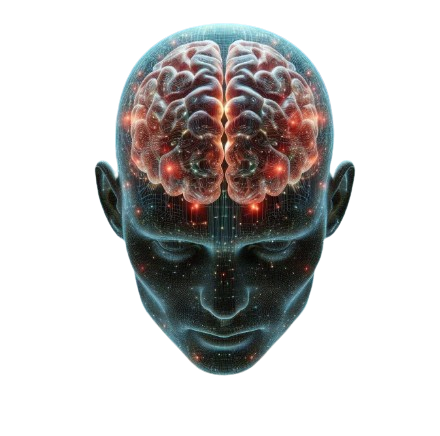
Konu 2 – Tüketim psikolojisi ve algoritmalar
Dopamin ve bağımlılık
Son bölümde, şirketlerin daha fazla satın alma algısını nasıl yarattığını ele aldık. Bu bölümde ise tüketimin arkasındaki psikolojiyi özetleyeceğiz. İnsanları mutlu eden ve beynin dopamin hormonu salgılamasına neden olan birçok davranış vardır. Dopaminin ne olduğunu ve farklı davranışlara nasıl bağımlılık yaratabileceğini açıklayacağız.
Alışveriş sosyal medya kullanımı ve çevrimiçi oyunların ortak bir özelliği vardır: sizi mutlu edebilirler. Sosyal medya, başkalarının beğeneceği fotoğraflarınızı yüklemenizi teşvik eder. Sizi mutlu eden şey, olumlu geri bildirimlerdir. İyi olduğunuz bir oyun oynarsanız ve bu oyun size geri bildirim verirse, mutlu olursunuz. Oyun, sosyal medya geri bildirimi veya alışveriş gibi ekran başında iyi deneyimler yaşadığınızda, beyniniz dopamin salgılar. Dopamin, beynin ürettiği ve size mutluluk hissi veren bir maddedir. Dopamin, diğer şeylerin yanı sıra zevk hissi, zevk beklentisi ve motivasyon üreten bir nörotransmiterdir. Zevk hissini sürdürmek istediğiniz için daha fazla oynamak, daha fazla satın almak ve sosyal medyada daha fazla paylaşım yapmak istersiniz. Beynin bu kısmı, mantıksal beyniniz olan frontal lobdan daha hızlı aktive olur. Bu da mantıksal beynin artık karar vermemesine yol açar. Korkutucu olan bir diğer şey ise, ödül sisteminin doğru ve yanlışla ilişkili anıları değiştirmesidir, böylece frontal lob artık doğru ve yanlışı ayırt edemez ve siz düşünmek yerine dürtülerinizi ve duygularınızı takip edersiniz.
Beyin bağımlılıkla birlikte değişir ve bağımlı olduğunuz ilacı almanız gerektiğini düşünerek kendini kandırır. Bağımlılığın etkilediği beyin bölgesinin basitleştirilmiş bir resmi burada görülebilir.
Buna Ali'nin beyni diyelim. Ali, arkadaşlarının gönderilerini beğendiği sosyal medyada. Arkadaşları yorum yapıp onun komik olduğunu söylediklerinde kendini iyi hissediyor. Bu, ventral tegmental alanın (VTA) dopamini accumbens çekirdeğine ve amigdalaya göndermesine neden olur. Dopamin patlaması, onu bunu tekrar yapması gerektiğini düşünmeye itiyor. Accumbens çekirdeği, bir ödülün olumlu yönlerini büyüten ve o deneyimi tekrarlamak istemenize neden olan bir alandır. Frontal lob, beyinde işleri gerçekleştiren ve mantıklı düşünen alandır. Bu, çelişkili düşünceleri nasıl ayırt edebileceğinizle ilgilidir: neyin kötü ve iyi, daha iyi ve en iyi, aynı ve farklı olduğu, eylemlerinizin gelecekteki sonuçları ve hatta sosyal durumlarda bunları kontrol etme. Ekran bağımlılığı, oyuncunun uykuyu feda ederek kendi ekran kullanımını artık kontrol edememesi durumudur. Ekran kullanımı tüm zamanınızı tüketir ve kimse gönderilerinizi ve yorumlarınızı beğenmezse veya sizi eleştirirse depresyona neden olabilir.
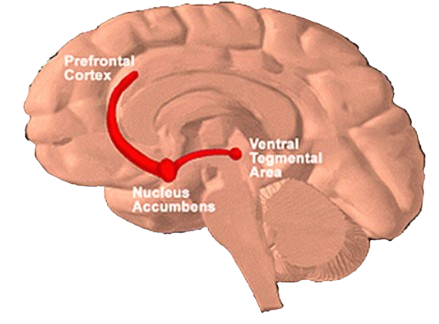
Dopamin hipotezi, nikotin, alkol, uyuşturucu, kültler, din, aşk ilişkileri, öfke vb. gibi her türlü bağımlılıktan etkilenebileceğinizi öne sürer. Dopamin salınımını tetikleyen şeylerden birinin tadını aldığınızda bağımlı hale gelme eğilimi gösterirsiniz. Kişisel deneyimler ve genetik faktörler, bir bireyin neye bağımlı hale geleceğini etkiler. Zamanla beyin, önceden çok çekici olan maddeye veya faaliyete uyum sağlar ve onu daha az ilgi çekici hale getirir. Beyin, daha az dopamin üreterek veya dopamin reseptörlerini ortadan kaldırarak tepki verir, böylece vücut sistemdeki dopamini algılamaz. Bu da aynı etkiyi elde etmek için daha fazla oynamaya ihtiyaç duyulmasına yol açar. Bu adaptasyonlar, doğal dopaminin zamanla beyindeki ödül sistemi üzerinde daha az etkiye sahip olduğu anlamına gelir.
Bu nedenle bazı Çinli araştırmacılar bu teknolojiyi dijital eroin olarak adlandırıyor. Los Angeles'taki California Üniversitesi'nde nöro-araştırma direktörü olan Dr. Peter Wibrow, ekranları elektronik kokain olarak adlandırıyor. Ayrıca araştırmalar, bağımlılığın tedavisinde tek etkili yöntemin, beyin oyun oynamak, içmek veya bağımlı olduğu her neyse onu yapmak istemediğini hissedene kadar bir süreliğine tamamen kesmek olduğunu gösteriyor. Araştırmalar, bir kişinin bağımlılık yaratan faaliyetten tamamen uzak durması gereken sürenin kişiden kişiye değiştiğini göstermektedir. Ancak, genel olarak çoğu kişinin sosyal medya, oyun veya porno izlemeyi iki ila beş veya altı hafta arasında bir süre için bırakması gerekmektedir.

Ne tüketirsen osun
Şirketler, sizi ürünlerini satın almaya ikna etmek için her şeyi yaparlar. Tüketimi artırmak için, sizi daha fazla satın almaya ikna etmeye çalıştıkları birçok benzer ürün üretirler. Şirketler, 20. yüzyılın başlarında moda modellerini kullanmaya başladı. Bunun amacı, bir modelin yaşam tarzını satmaktı. Satmaya çalıştıkları mesaj, bu elbiseyi veya bu makyajı yaparsanız mutlu olacağınız yönündeydi. Benim gibi güzel olursan mutlu olursun. Bu kavram, mobilya veya araba gibi diğer ürünler için de geçerlidir. Bunu satın alırsan mutlu olursun. Trendleri takip etmenin, modaya uygun olmanın ve ürünlerin sizi mutlu etmesinin önemli olduğu hissini yaratır.
Instagram ve YouTube gibi sosyal medya platformlarının ortaya çıkmasıyla birlikte, yeni bir tür ünlü ortaya çıktı: influencer.
Modeller ve influencer'lar arasındaki farklar şunlardır:
- Özgünlük: influencer'lar daha kişisel oldukları ve sizin arkadaşınız olabilecekleri hissini yarattıkları için daha yakın hissedilirler.
- Etkileşim: influencer'ların etkileşim oranları daha yüksektir, bu da reklamların daha etkili olmasını sağlar.
- Çeşitlilik: influencer'lar modellerden daha çeşitli geçmişlere sahiptir ve size daha çok benzeyen bir imaja sahiptir.
Bir influencer, bir reality şovun yıldızı ya da sadece ilginç bir mesajı olan güzel veya ilginç bir kişi olabilir. Sosyal medya herkese açık olduğundan, herkes içerik yükleyebilir ve istediği her şeyi söyleyebilir. Bazı insanlar bundan yararlanarak size yanlış bilgiler verebilir. Zaten takip ettiğiniz kişilere inanmak kolaydır. Çoğu zaman zararsız görünebilirler, ancak ara sıra sizin için iyi olmayan mesajlar iletebilirler. Cinsiyetçi veya ırkçı, hatta radikal fikirler gibi tutumları aktarabilirler. Bu nedenle, duyduklarınıza eleştirel yaklaşmak önemlidir.
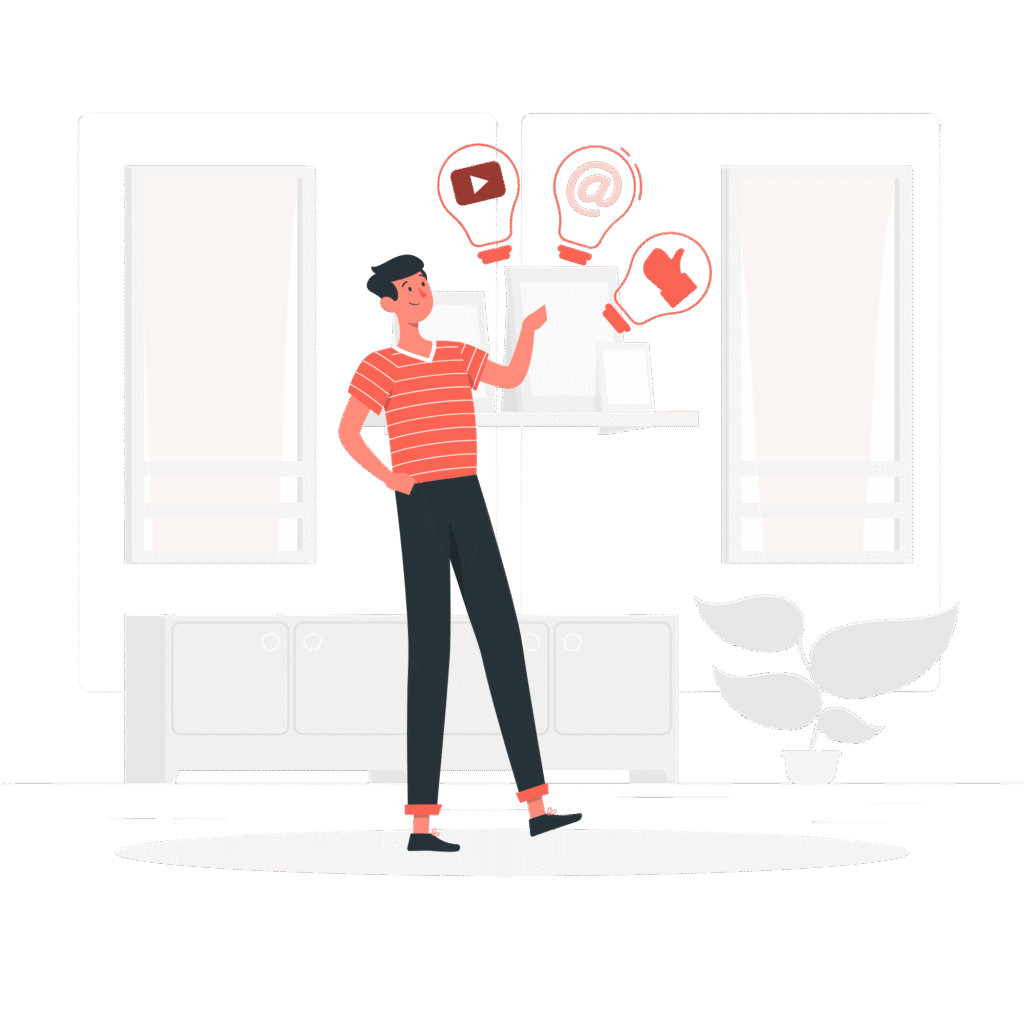
Algoritmalar
Sosyal medya, oyun, kumar ve pornografik sitelerin yapımcıları, sizi sitelerinde tutmak için zeki psikologlar istihdam etmişlerdir. Bu psikologlar, bağımlılık durumunda beyninizin nasıl çalıştığını bilirler ve bu bilgiyi sizi tuzağa düşürmek için kullanırlar. Her web sitesinin amacı, ya bir şey satın almanızı sağlamak ya da mümkün olduğunca uzun süre sitede kalmanızı sağlamaktır. Çoğu web sitesi, bir web sitesindeki tercihlerinizi izlemek için bilgisayarınıza, tabletinize veya telefonunuza çerezler yerleştirir. Genellikle çerezler, web sitesine sizinle ilgili yararlı bilgileri hatırlatmak ve iletmek ve sizin isteyeceğinizi düşündükleri bilgileri görüntülemek için tasarlanmıştır. Bununla ilgili sorun, sitenin içeriğine o kadar ilgi duymanız ve siteden çıkmayı unutmanız olabilir. Örneğin, bir şey satın alırsanız, genellikle daha fazla satın almanız için size benzer ürünler gösterirler. Çerezler, algoritmalar kullanarak ilginizi çekecek reklamlar hazırlayan arama motorlarına bilgi gönderir ve bu reklamlar, başka sitelerdeyken bile karşınıza çıkabilir. Bazı çerezler diğerlerinden daha agresiftir ve sizi korkutacak kadar ileri gidebilir. Bazı açılır reklamlar, cihazınızın virüs bulaştığını ve tıklamanız halinde size yardımcı olabileceklerini söyleyebilir. Bu tür açılır pencereler reklam değil, kullanıcıdan para sızdırmaya çalışan kötü amaçlı yazılımlar, casus yazılımlar ve hatta bilgisayar virüsleridir. Sonuçta, bu tür yazılımlar cihazınızı bozmak ve hayatınızı çekilmez hale getirmek için oluşturulmuştur.
Arama motorları ve web siteleri çerezler kullanır. Çerezler, web tarayıcısının web sitelerinden depoladığı küçük bilgi parçacıklarıdır. Çerezler, kullanıcıya daha kişiselleştirilmiş bir tarama deneyimi sunmak için işlenir. Örneğin, çevrimiçi alışveriş yaparken, araştırma yaparken veya sosyalleşirken. Algoritmalar, bilgisayarların problemleri çözerken verileri nasıl işlediğine dair sıralamalar veya prosedürlerdir. Sonuçta bir yemek ortaya çıkan yemek tarifi gibidir. Tarama algoritmaları, kullanıcının bir web sitesinde alışveriş yapmasını veya sitede kalmasını amaçlayan bilgisayar kodlarıdır. Algoritmalar, hesaplamalarını bir sitenin aldığı sayfa görüntüleme sayısını, her sayfadaki ziyaretçi sayısını, kullanıcı oturumlarının uzunluğunu vb. kaydeden çerezlere dayandırır. Bu verileri, benzer videoların önerilerini aldığınız, iyi bilinen sosyal medya siteleri olan YouTube, Instagram ve TikTok'u size göndermek için kullanırlar. Ancak bazen, şiddet içeren videolar, kendine zarar verme, intihar, cinsel davranış, radikal mesajlar vb. gibi aramadığınız videolar için de öneriler alırsınız
Jeff Bezos, Amazon.com web sitesini kitap satarak kurdu, ancak kısa sürede her şeyi satmaya başladı ve “her şeyi satan mağaza” haline geldi. Başarı faktörlerinden biri muhtemelen kendi sitelerinde kişiselleştirilmiş reklamlar ve YouTube'daki video reklamlar ile 1 tıklamayla satın al düğmesi idi. Ayrıca, ürünlerini pazarlayabilecek ve satışlardan komisyon alabilecek influencer'ları da kullanıyorlar. Amazon'un başarısı, Çinlilerin AliExpress gibi sitelerle uluslararası çevrimiçi alışveriş pazarına girmesine yol açtı, ardından JD.com, LightInTheBox ve Shein geldi. 2024 yılında, Çin merkezli bir başka e-ticaret platformu olan Temu, interneti reklamlarla dolduruyor. Bu siteler, kaliteli ve dayanıklı olmayan ucuz ürünler satıyor. Ancak, makul fiyatlarla kaliteli ürünler de sunabiliyorlar. Tüm bu sitelerin ortak özelliği, ürünü satın alan kişilerin ürün yorumlarını ve puanlamalarını sunmalarıdır. Bu, kullanıcının biraz daha bilinçli bir karar vermesini sağlar. Şirket için daha da önemlisi, bu yorumların daha fazla alışverişi teşvik etmesidir.
Bu e-ticaret alışveriş platformları, oyunlarda olduğu gibi, sizi bağımlı hale getirmek için genellikle zaman sınırlamalı bonuslar ve indirimlerle sizi geri çekmeye çalışacaktır. Dönen çarklar, yanıp sönen ışıklar ve zamanı kullanarak rekabetçi genlerinize hitap ederler. Dikkatli olmazsanız, uygulamayı açıp bir şeyler satın almaya teşvik etmek için size bir şeyler “kazandığınızı” hatırlatan uyarılar da gönderirler.
Bir dahaki sefere bu sitelerden birine girdiğinizde, satın almak üzere olduğunuz şeyi bir düşünün, yoksa sadece dopamin almak için mi satın alıyorsunuz?
Kaynaklar
Beyin neden alışveriş yapmak ister? Big Think sayfasında bir nörobilimci tarafından açıklanan bir video:

Medya manipülasyonunun ardındaki yaygın nedenler şunlardır:
Pratik alıştırma
Katılımcıları 3-4 kişilik gruplara ayırın. Bu videoları izleyin ve aşağıdaki soruları tartışın:
Andrew Tate: Man up (Erkek ol)
https://www.youtube.com/watch?v=lBO9pMU5phY
Bu videonun mesajı nedir?
Bu videoda hangi tehlikeleri görüyorsunuz?
Bu videonun sorunu ne olabilir?
Tweet hakkında röportaj:
https://www.youtube.com/watch?v=MsPayaH6Q_M
Bu mesaj cinsiyet eşitsizliğini nasıl teşvik ediyor?
Tartışma
Grupta paylaşın:
- Hangi influencer'ları takip ediyorsunuz?
- Neden bu influencer'ları takip ediyorsunuz?
- Grubun geri kalanına, bu influencer'ın en sevdiğiniz videolarından birini gösterin.
- Onu eleştirel bir gözle değerlendirin, söylediklerinde yanlış olan ne var? Hiçbir şey yok mu?
Modülün Özeti
Bu modül, öğretmenlere ve eğitmenlere tüketim toplumu ve onun sosyo-teknik bağlamını analiz etme becerisi ve bilgisi kazandırmayı amaçlamaktadır.
Öğrenme Çıktıları
Bu modülün sonunda, öğrenenler aşağıdaki konularda bilgi ve beceri kazanacaklardır:
- Tüketim toplumlarının tarihi ve psikolojisi.
- Teknoloji ve algoritmaların alışveriş davranışları üzerindeki etkisi.
- Tüketimde etik hususlar.
- Dijital teknolojileri kullanarak etkileşimli öğrenme materyalleri tasarlama.
Öz değerlendirme için Test soruları
Terimler Sözlüğü
Sosyal medyada, hayatı ve hayat bilgeliği hakkında bilgi vererek veya düşüncelerinizi ve alışkanlıklarınızı etkilemek için nasıl yaşadığını göstererek hayatınızı etkileyen kişidir.
Kaynakça

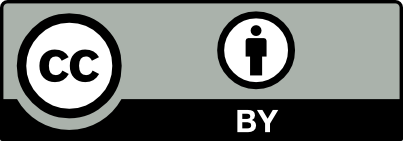
Avrupa Birliği tarafından finanse edilmiştir. Ancak burada ifade edilen görüş ve fikirler yalnızca yazar(lar)a aittir ve Avrupa Birliği’nin veya Avrupa Eğitim ve Kültür Yürütme Ajansı’nın (EACEA) görüşlerini yansıtmak zorunda değildir. Avrupa Birliği veya EACEA bu içerikten sorumlu tutulamaz.
Proje numarası: 2023-1-NO01-KA220-ADU-
